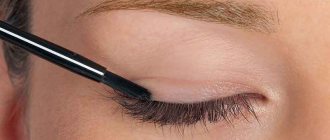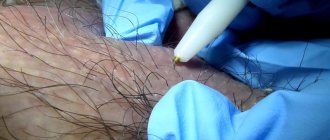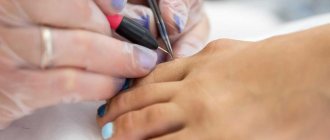Hairline correction
Regardless of your gender, if you are unhappy with the shape of your hairline for any reason, hairline restoration surgery may be the answer to your prayers.
This is true; The hairline restoration industry has traditionally focused its marketing efforts on men because men make up a larger percentage of the population who complain of hair loss. According to some statistics, male pattern baldness affects more than 66% of all men at some point in their lives, and signs can appear as early as late puberty. In contrast, female pattern baldness affects approximately 50% of women, but the condition tends to occur later in life, after menopause.
Hairline restoration is a relatively simple transplantation procedure in which hair on balding areas of the scalp is replaced with new hair.
Anyone who suffers from persistent baldness that runs in families can benefit from hairline restoration surgery, which is why women are increasingly turning to this procedure.
Other people who may benefit from hairline restoration surgery
Transgender women are also actively involved in hairline restoration, aiming to change their natural masculine hair structure to a more feminine one. Individuals who have experienced hair loss due to burns or scalp injuries may also benefit from hairline restoration surgery.
How to change the direction of hair growth on your head
There are several reasons why the growth line may be in the wrong direction:
- Two central cowlicks on the top of the head.
- The presence of two centrifugal diverging strands forming a natural parting.
- The presence of a centrifugal converging strand, which makes the entire hairstyle bristle. Most often it happens on the back of the head.
- Natural cowlick, in any part of the head except the crown.
- Vortex stars. They especially interfere if they are close to the edge line. In this case, it is problematic to trim the bangs, because they will stick out in different directions.
When such features appear, the risk of improper growth increases, which causes inconvenience when styling and choosing a haircut.
Luckily, there is a way to get your hair to grow in the right direction.
For this you will need:
- comb;
- hair dryer;
- styling (styling product);
- heat protectant;
- bobby pins or other durable hairpins.
It is advisable to do the procedure during the day. You need to apply a heat protectant to your hair and start styling it in the desired direction using a hairdryer and comb for 10-15 minutes. At the end, fix the styling with styling and hairpins in the desired position, and continue like this until the evening. If it is not possible to come to work or a business meeting with such a hairstyle, you can postpone the procedure to the evening.
To obtain the desired result, it will take 2 to 6 months of effort. The main thing is to carry out the procedure every day.
Hairline correction contraindications
Hairline restoration surgery is not suitable for everyone. People who are dealing with other types of hair loss, such as hair loss caused by certain medications, weight loss surgery, or other medical regimens such as chemotherapy, are usually not candidates for hairline restoration surgery.
People with alopecia or keloid scars from injury or surgery, or people who don't have enough hair to donate to themselves, are also not ideal candidates.
Hairline correction: how the procedure works
To perform a hairline restoration transplant, the surgeon removes hair from the back of the head to the front hairline using one of two methods: follicular unit transplantation (FUT) or follicular unit extraction (FUE).
Because hair transplants are an outpatient procedure and only use local anesthesia (such as in a dentist's office), they are usually performed under sterile conditions in your doctor's practice.
Anyone who suffers from persistent family pattern baldness may benefit from hairline restoration surgery
In the FUT hairline restoration procedure, the surgeon removes a small piece of scalp from the back and moves it to the hairline area. In the FUE hairline restoration procedure, individual follicles containing one to four hairs are moved to the desired location.
Each hairline restoration option has certain risks and benefits. While we won't be comparing them to each other here, we will first discuss the general risks of performing the procedure.
Hairline correction complications
Minor problems
Although hairline restoration surgery is generally safe, it is still an invasive cosmetic procedure that can sometimes cause minor complications. Most of these side effects go away on their own within a few days or weeks; otherwise, consult a doctor.
- Bleeding – You can expect some bleeding after the procedure and for a few days afterwards.
- Pain – Expect to feel pain and tenderness in both the donor and recipient areas of the scalp. For normal pain levels, nothing stronger than a mild analgesic such as acetaminophen or ibuprofen is needed.
- Swelling is normal if there may be some swelling on the scalp where the hairline restoration procedure was performed. Ask your doctor how to safely reduce swelling.
- Bruises – Don’t be surprised to see bruises around your eyes. Apply cold compresses to the affected areas.
- Skin with crusts and scabs. As your wounds begin to heal, you will likely see dry, flaky, and hard skin and crusts . This is completely normal and should be expected, especially since you may not be able to thoroughly or vigorously wash the affected areas. This means that there will be a natural build-up of dead skin cells, dirt and oils.
- Itching – All that crusty skin and scabs can certainly cause itching in the areas where the hairline restoration procedure was performed. Ask your doctor what you can do to relieve itching and avoid scratching.
- Scalp numbness - Typical numbness or tingling in the graft and donor area. If this continues for more than a week after the procedure, tell your doctor. The following complications can be managed at home, but you should contact your surgeon if you have any questions or before attempting to treat them yourself.
- Folliculitis – Excessive inflammation, redness, swelling, pus and pimply rashes can be signs of infection in the hair follicles. If you develop a fever, call your surgeon immediately.
- Shock Hair Loss – Hairline restoration surgery can sometimes cause trauma that results in sudden, usually temporary, loss of the transplanted (natural) hair. As long as the dermal papilla cells underneath the hair follicles remain intact, hair will eventually grow back. Shock hair loss is a normal side effect of the hair transplant procedure.
Hair Graft Loss – If you carefully follow your doctor's instructions after surgery, you should not experience hair graft loss after hairline restoration surgery. Every day after surgery, your body works to integrate the grafts into your scalp, and the hair grafts become more “fixed.”
It is common for some graft loss to occur within the first 2-3 days after surgery, but if you notice this happening, you should see your doctor so they can determine if the loss is within normal limits.
Serious problems requiring immediate medical attention
Allergic reaction to anesthesia, antibiotics, or something else
Allergic reactions can often mimic other symptoms. Because hair transplant surgery is not a regularly scheduled event like a visit to the eye doctor or dentist, most patients do not have experience with anesthesia or prescribed medications. Don't take any chances, contact a healthcare professional at the first sign of minor skin irritation or itching that seems to develop into hives or shortness of breath. You may be on the way to a full-blown anaphylactic shock reaction.
Failed Hairline Restoration Transplant
Even if you've done all the research and invested in the most professional hairline restoration procedure you can afford, sometimes they fail. Several factors can cause transplant failure, such as smoking, drinking alcohol, sweating, high blood pressure, failure to take prescribed medications (such as minoxidil or finasteride), lack of proper hair and scalp hygiene, and the use of inexperienced surgeons or unreliable clinics.
Dissatisfaction with the results of hairline restoration surgery
Since your hairline is visible to everyone, it's understandable that you're hoping for a quick and complete transformation. When you've been to hairline restoration clinics, you've probably seen a lot of photos of people with outstanding results and heard testimonials from satisfied clients. Perhaps these images have raised your expectations of what your own hair will look like after your hairline restoration procedure.
However, it is possible that even if your hairline restoration procedure went exactly as planned without any complications, you may not be satisfied with your results.
Perhaps your hair is still thin in the transplant area or there are unnatural tufts of hair that you don't want. You may have noticed scarring. If you have a loose scalp or very curly hair, your results may not be satisfactory in your estimation.
Consult a doctor
The best thing to do if you are unhappy with the results of your hairline restoration surgery is to talk to your surgeon about your concerns.
It is possible that some of the problems you are experiencing are temporary or can be easily resolved with a retouching procedure. This is why it is important to follow all of your doctor's instructions and document as much as possible by taking notes and taking pictures. If you can prove that your dissatisfaction with the outcome was not your fault, you may be able to convince your doctor to correct the problems at no additional cost to you.
We recommend reading: Beard transplantation.
Simple correction
This type includes options such as bangs, special styling, hair gel, plucking, shaving and lightening.
If you are the owner of very large bald spots, then the easiest way to hide them is styling. To do this, choose hairstyles such that the hair on the sides of your face is loose. In this case, you will not have to resort to radical measures. Avoid high, slicked-back hairstyles such as a high ponytail or bun.
For women with pronounced triangles, it is recommended to have a haircut with bangs. If the problem with the line is very obvious, then it is best to keep the bangs straight. Its length doesn't matter.
Another way to remove a triangle from your hair is to comb it. However, the hairs themselves are unlikely to be held in an unnatural position. To make the comb last, use hair gel or mousse. Apply a small amount to your hands and rub into your hair. Next, use a comb to comb them back.
For those whose hair grows in a small triangle or “island” in the center of their forehead, we suggest trying to lighten it with hydrogen peroxide.
Apply a little liquid to a cotton pad and hold it on the problem area for a minute or a little more. By doing the procedure daily, you will see that your hair becomes lighter every day. However, this method is only suitable if the hairs are not hard and long.










